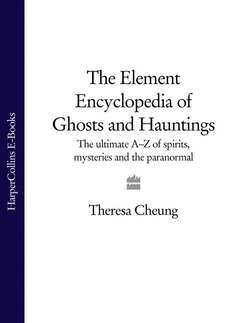Читать книгу The Element Encyclopedia of Ghosts and Hauntings: The Complete A–Z for the Entire Magical World - Theresa Cheung, Theresa Cheung - Страница 167
DIRECT VOICE MEDIUMSHIP
ОглавлениеThe independent speaking of a spirit voice that does not seem to emanate from any living person in a given environment and without using the medium’s vocal cords. Commonly associated with the séances of the early Spiritualist movement, direct voices seem to come from out of thin air or through a medium’s trumpet, which was specifically used for this purpose. Most early spiritualists used direct voice communication, although some, like Ohio farmer Jonathan Koons, whose spirit room was famous in the 1850s for voices that sang ‘unearthly songs’, were more proficient at it than others. According to some spiritualists the voices were made possible by an artificial voice box, constructed by spirits and activated by ectoplasm.
Nineteenth-century records of direct voices talking at the same time as the medium or from different locations attest to their authenticity, but direct voice mediumship was always at risk of being exposed as ventriloquist fraud. In the twentieth century the practice became very rare indeed, with most mediums receiving information from spirits and relaying in their own voices. However from the 1940s to the 1970s medium Leslie Flint of England became famous for giving what appeared to be genuine direct voice readings. Flint was investigated and tested by several psychical researchers but the possibility of fraud was ruled out. The most dramatic test took place in 1970 in New York, when Flint’s mouth was sealed with plaster and a microphone placed down his throat. No evidence of vocal activity could be found while direct voices seemed to speak from above and slightly to the left of his head.
